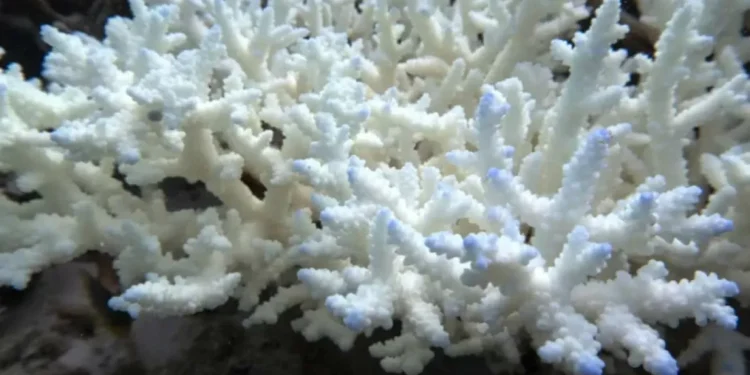The Great Barrier Reef, located off the coast of Australia, is a natural wonder that has captivated the world for centuries. Its vibrant colors and diverse marine life make it one of the most significant and valuable ecosystems on Earth. However, recent studies have revealed that this magnificent reef is facing a crisis like never before.
According to a study published in the prestigious scientific journal Nature, the Great Barrier Reef is currently experiencing its hottest sea surface temperatures in four centuries. The first quarter of 2024 recorded a temperature rise of 0.19°C above the previous peak, which is a worrying sign for the health of this delicate ecosystem. This extreme warming is directly linked to extensive coral bleaching, a process in which corals expel the algae living in their tissues, causing them to turn white and eventually die.
The Great Barrier Reef is home to over 1,500 species of fish, 411 types of hard coral, and countless other marine creatures. It is also a vital source of income for the local communities, generating billions of dollars in tourism revenue every year. The reef is not only a natural treasure but also an economic lifeline for many. Therefore, the current situation is not only a threat to the environment but also to the livelihoods of the people who depend on it.
The rise in sea surface temperatures is a result of climate change, caused by the increasing levels of carbon dioxide and other greenhouse gases in the atmosphere. These gases trap heat and warm the Earth’s surface, leading to a rise in sea temperatures. The Great Barrier Reef is particularly vulnerable to this warming as it is located in a tropical region where even a small increase in temperature can have devastating effects.
The consequences of this extreme warming are already being seen on the reef. In the past few years, there have been five mass bleaching events, with the most severe one occurring in 2016 and 2017, which left almost a third of the coral dead. The recent study shows that the current temperature rise is even more alarming and could lead to further damage to the reef’s delicate ecosystem.
Coral bleaching not only affects the corals themselves but also has a ripple effect on the entire marine ecosystem. As corals provide shelter and food for a vast number of species, their decline can have a significant impact on the entire food chain. This, in turn, can affect the fishing industry and the livelihoods of the local communities.
However, there is still hope for the Great Barrier Reef. The study also suggests that if immediate and significant action is taken to reduce carbon emissions, the reef could still have a chance of recovery. This means that we, as a global community, have the power to make a positive impact and save this natural wonder.
The Australian government has already taken steps to address this issue by implementing a Reef 2050 plan, which aims to reduce pollution, improve water quality, and increase resilience to climate change. However, more needs to be done, and it is not just the responsibility of one country, but of the entire world.
Individual actions can also make a difference. We can all do our part by reducing our carbon footprint, using renewable energy sources, and being mindful of our consumption habits. Small changes can add up and make a significant impact in the long run.
The Great Barrier Reef is a symbol of the beauty and diversity of our planet. It is a reminder that we are all connected and that our actions have consequences. We must act now to protect this natural treasure for future generations to come. Let us not be the generation that stood by and watched as it disappeared, but the one that took action and saved it.
In conclusion, the recent study published in Nature is a wake-up call for all of us. The Great Barrier Reef is facing its biggest challenge yet, and it is up to us to take action. We have the power to make a positive impact and save this natural wonder for future generations. Let us come together and do our part in protecting this magnificent reef, one of Earth’s most significant natural treasures.



